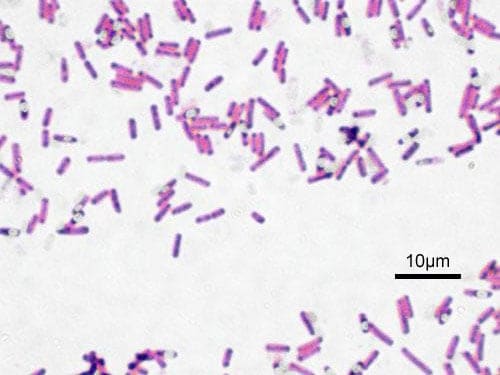It’s no coincidence that the earthworm’s slender shape makes it perfect for weaving through narrow tunnels. Evolution moulds the shapes of living creatures according to the benefits they offer. At the microscopic level, do the various shapes of bacteria also contribute to their survival? Does a spherical bacterium (coccus) have a better chance of infecting its host than its stick-shaped neighbour (bacillus)?
Analysis of the evolution of the pathogenic bacteria that live in the nasopharynx suggests that the shape of these bacteria has changed over time, shifting from bacillus to coccus. In an article published in the journal PLOS Genetics, Professor Frédéric Veyrier, of INRS-Institut Armand-Frappier Research Centre, and his colleagues demonstrate that this change may have occurred to make the bacteria better at slipping through the defences of their host’s immune system.
Public health officials keep careful watch over respiratory infections, which are the number three cause of death worldwide. The pathogens responsible for these infections have evolved in order to thwart immune defences. Highly adapted to the ecological niche of nasal passages, Neisseria meningitidis and Moraxella catharralis can sometimes cause severe infections in humans. Genetic analysis of the ancestors of these bacteria pinpointed a key gene: yacF. The absence of this gene makes it possible for the shape of these bacteria to evolve. The N. meningitidis and M. catharralis found today in humans are spherical and missing the yacF gene.
The bacteria’s shifting from sticks to spheres allowed the composition of certain molecules on their surface to transform. These molecules, peptidoglycans, play an important role in the way the immune system recognizes bacteria.
“We have long believed that the shape of bacteria was a fixed variable,” commented Professor Veyrier. “We even use it as a way to classify bacteria. Some mystery remains as to how the various species regulate their shape. This research demonstrates that the environment in which the bacteria evolve has an impact on their morphology. These are exciting results because we were able to identify the same change in two different species–and therefore its impact could be a key aspect in the specific way these pathogens are adapting to the human nasopharynx.”
By broadening our understanding of the evolution of bacteria, the researchers hope to design new strategies for avoiding severe infections. This new knowledge about microbes that change shape from generation to generation could lead to tools for preventing and treating such infections.


